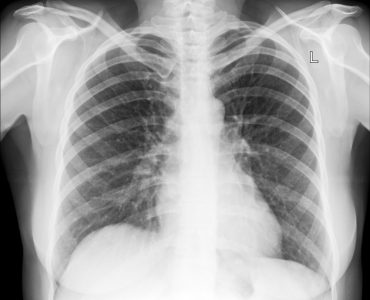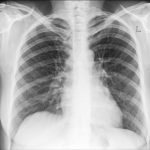Procedure of surgery
Once the anaesthesia has its effect, the surgeon starts by removing the affected hip joint. The upper part of the thigh bone is extracted and the acetabulum or the hollow in the pelvis is hollowed out to fit a plastic socket into it. a short and angular metal shaft with a smoothened ball shape on top is fitted into the hollow of the femur bone. The plastic socket and the artificial ball head are then pressed one into the other or glued with acrylic cement.
As also mentioned earlier, in MoM (metal-on-metal) hip resurfacing, the basic procedure remains the same, the difference being that the bone is only scraped at the surface and very little of it is removed and replaced with metal plates on the joint surfaces.
Materials used in hip replacements
The prosthetic parts used for both the conventional and metal-on-metal techniques are almost the same. The socket is made of high-density propylene, shaft is a titanium alloy and the ball could be separately made of an alloy of chromium, cobalt and molybdenum or could be made of ceramic. The parts can either be cemented or uncemented. Cemented parts are attached to the healthy bone using special glue. The uncemented parts are made of porous materials and bone grows into this part overtime.
There are about 60 options of prosthesis or implants available. The surgeon will advise the parts which are best suited for your problem. Most of the parts have 90%chance of lasting a minimum of 10 years.
The National Joint Registry (NJR) collects information on hip replacements and can advise you on the best performing and effective type of surgery. You can read details from their website for further information.
Risks of surgery
Hip replacement has become a routine and commonplace surgery, however, it does carry its set of risks. The commonly seen complications include
Loosening of the artificial joint, normally10-15 years after surgery. The cause could be loosening or dislocation of the shaft in the hollow of the femur or thinning of bone surrounding the implant. About 10% of the surgery cases might require a revision surgery to correct the above.
Wear and tear of the artificial plastic sockets. The abraded particles can be taken in by the surrounding tissues thus producing inflammation. Anti-inflammatory drugs can help resolve the problem; however, in serious cases surgery may be required.
Less commonly appearing complications include
Infection – can be tackled by use of antibiotics during surgery and having “clean air” ventilation in operation theatre. Infection can persist in 10% of cases and if they are serious, the only way to treat is to remove and re-implant the joint.
Dislocation of the artificial hip from the socket. Replacement under anaesthetic is required. However, frequent problem would need another surgery.
Blood clotting in the deep veins of leg, also called deep vein thrombosis, is caused due to decreased movement. Exercises, medicines and special stockings can help get rid of the problem.
Stiffening of joint caused by hardening of soft tissues surrounding the implant. Medicines and radiation therapy can help prevent this problem.
Hip Replacement – 3

Let us know if you liked the post. That’s the only way we can improve.










